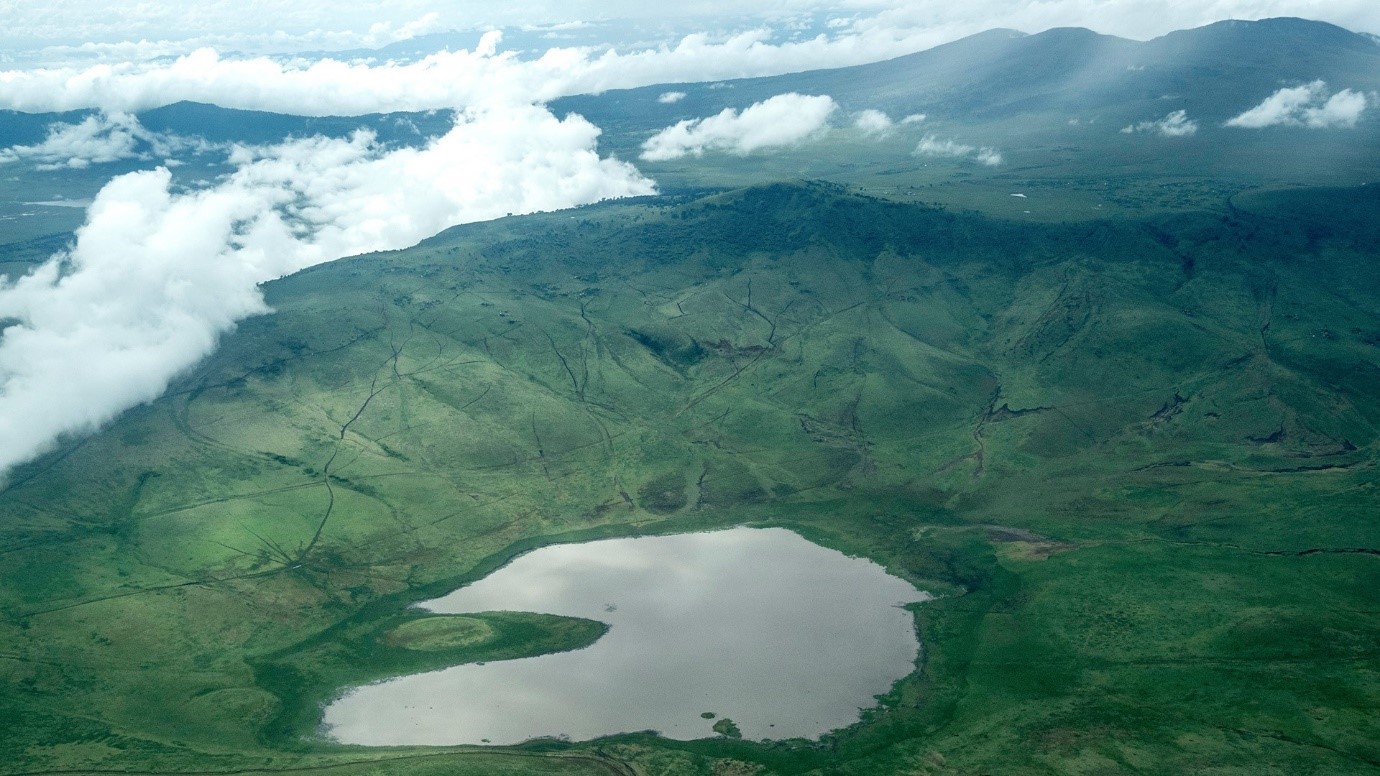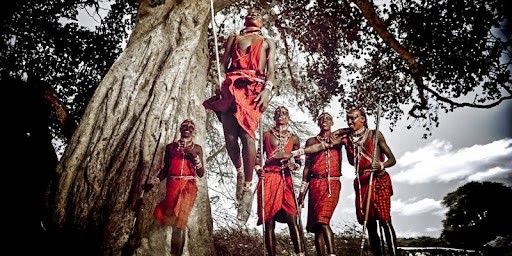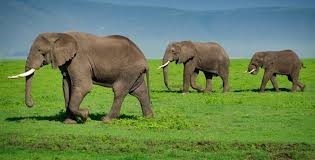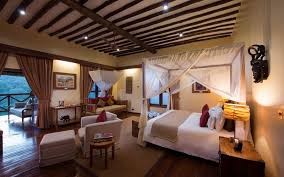10 Fun and Interesting Facts About Tanzania's Ngorongoro Crater

Consider putting almost 30,000 huge creatures inside the caldera of an extinct volcano. The Ngorongoro Crater, a world-renowned safari location that offers outstanding animal watching in a strikingly unique setting, is made up of 264 square kilometers (102 square miles) of lush wetlands, dense woodlands, and expansive grasslands. You will always remember that amazing moment when you first look into the Ngorongoro Crater.
Located inside the Ngorongoro Conservation Area, this protected area includes the ancient Ngorongoro Highlands, a group of long-dormant volcanoes on Tanzania's western side of the Great Rift Valley, as well as a sizable section of the short-grass plains of the southern Serengeti. Acclaimed as one of Africa's most remarkable natural wonders, the Ngorongoro Crater is home to a remarkable diversity of species that thrives in a variety of environments.
The nearby Maasai communities play a crucial role in the region's cultural landscape. The Maasai people are semi-nomadic pastoralists known for their vibrant culture and deep connection to the land. They coexist with wildlife, and their traditional practices often highlight sustainable living and conservation efforts.

But what is the geological history behind the Ngorongoro Crater? And what sets it apart from other attractions? Here are ten compelling facts about the Ngorongoro Crater that shed light on its significance and uniqueness.
Frequently Asked Questions About Ngorongoro Crater
How Was the Ngorongoro Crater Formed?
The Ngorongoro Crater is believed to have formed approximately 2.5 million years ago when an active volcano experienced a massive eruption, causing its cone to collapse inward. This cataclysmic event left behind the vast, unbroken caldera that we admire today.
What Is a Caldera?
The term "caldera" comes from the Spanish word for "cauldron." A caldera is a large, bowl-shaped depression typically measuring over one kilometer (0.6 miles) in diameter, with steep slopes forming its outer edge. It is formed when a volcanic cone or group of cones collapses due to the absence of support from the underlying magma. After the primary eruptions conclude, the top of the volcano vanishes, leaving a substantial void. Subsequent smaller eruptions may give rise to smaller cones within the caldera, which can eventually fill with water to create lakes.
What Makes the Ngorongoro Crater Unique?
Apart from being the largest unbroken volcanic caldera on the planet, the Ngorongoro Crater serves as a natural sanctuary, home to some of Africa’s highest concentrations of large mammals. Its enclosed environment has effectively led to the development of a self-sustaining ecosystem.
What Is the Age of the Ngorongoro Crater?
The Ngorongoro Crater is estimated to be between two and three million years old, making it an ancient geological formation with a rich ecological history.
What Is the Ngorongoro Crater Famous For?
The Crater is renowned for its stunning geological features and the incredible diversity of flora and fauna found within its compact area. It offers some of the most reliable sightings of the Big 5—lion, leopard, buffalo, elephant, and rhino—making it a top destination for wildlife enthusiasts.
What Does "Ngorongoro" Mean in English?
The name "Ngorongoro" is believed to originate from the Maasai people, describing the sound made by the bell that adorns the lead cow in a herd. The bell emits an echoing “ngor ngor” sound, inspiring the locals to name the region Ngorongoro.
When Is the Best Time to Visit Ngorongoro Crater?
Since wildlife is present in the caldera year-round, the optimal time to visit depends more on your preference for fewer crowds than on the wildlife itself. The dry season, from June to October, offers cooler temperatures and excellent visibility for spotting animals, as they tend to gather around water sources. However, this is also peak season, attracting numerous tourists. The rainy seasons, occurring from April to May and November to December, yield fewer visitors, transforming the Crater into a vibrant, green paradise, though road conditions may become muddy.
Facts About Ngorongoro Crater
The Largest Intact Volcanic Caldera Without a Lake The Ngorongoro Crater measures approximately 16 to 19 kilometers (10 to 12 miles) in diameter, with walls rising between 400 and 610 meters (1,312 to 2,000 feet)—more than 1.5 times the height of the Empire State Building. While other calderas exist, the Ngorongoro Crater is unique for being the largest with intact walls that have not been submerged in water.
One of Africa's Seven Natural Wonders The Ngorongoro Crater is considered one of Africa’s Seven Natural Wonders, alongside iconic sites such as the Red Sea, Mount Kilimanjaro, the Sahara Desert, the Great Migration, the Nile River, and the Okavango Delta. Located within the Ngorongoro Conservation Area, it is also recognized as a UNESCO World Heritage Site.
Home to Africa’s Highest Density of PredatorsA wide range of herbivores can find enough of grazing in the lush short-grass plains that cover the Crater floor thanks to the nutrient-rich volcanic soil. Ngorongoro is the greatest location in Africa to view large animals since it draws a lot of predators. With one of the greatest pride densities in the world, the local lion population is very noteworthy. The Crater's lions are renowned for their audacity and frequently hunt near safari cars.
A Thriving Population of Large MammalsVisitors to the Ngorongoro Crater can anticipate seeing an impressive variety of wildlife on safari due to the presence of nearly 30,000 large mammals. Numerous grazers, including zebra, wildebeest, Thomson's and Grant's gazelles, buffalo, and tsessebe, thrive on the caldera floor's fertile soil. Hippos playfully inhabit the Ngoitokitok Springs and Gorigor Swamp, east of Lake Magadi. Over 500 species of birds, including ostriches, secretary birds, kori bustards, and greater flamingos, can be found in Ngorongoro.

East Africa’s Prime Spot to See the Big 5 The Ngorongoro Crater offers an exceptional opportunity to spot all members of the Big 5 in one location. Lions are plentiful, buffalo herds thrive, leopards are often seen in forested areas, and large elephant groups are present during the rainy months (November, December, April, and May). The Crater is particularly noteworthy for its endangered black rhinos, which can frequently be spotted grazing on the open grasslands in designated protected areas.
Absence of Giraffes and Impalas Surprisingly, despite the rich biodiversity, giraffes and impalas are notably absent from the Ngorongoro Crater. The lack of open woodlands and certain tree species that these animals prefer is believed to account for their absence from the caldera.
An Important Archaeological Site The Ngorongoro Crater is home to Olduvai Gorge, one of the most significant prehistoric sites on the planet. Fossils discovered within the volcanic rock date back approximately 3.6 million years, providing invaluable insights into human evolution. Replicas of these fossils, as well as the famous Laetoli footprints—considered the oldest evidence of bipedalism—can be viewed at the Olduvai Museum.
A Variety of Ecosystems Beyond its stunning vistas and wildlife, the Ngorongoro Crater is characterized by a remarkable diversity of habitats, including:
Crater Wall: Dense montane forests that serve as a habitat for leopards.
Lake Magadi: A seasonal alkaline lake surrounded by soda flats, home to numerous waterbirds.
Gorigor and Mandusi Swamps: Shelters for hippos, elephants, and lions.
Hippo Pool: A popular picnic spot where visitors can observe playful hippos.
Lerai Forest: A small woodland known for its residents, including Fischer's lovebirds, baboons, monkeys, leopards, and elephants.
Expansive Grasslands: Dominating the Crater floor, these are populated by large numbers of wildebeest, zebra, hyenas, eland, and lions.
Accommodations on the Crater’s Rim To preserve the delicate environment, the Ngorongoro Crater Conservation Area restricts access permits to six hours for visitors on the caldera floor, meaning overnight accommodations are not available inside the Crater. However, several safari lodges and camps are situated on the Crater’s rim, offering some of the most breathtaking views in the world. Visitors can also find more budget-friendly options in the nearby town of Karatu, though it requires about an hour's drive to reach the Crater. Staying on the rim allows for early access to the caldera for morning game drives.

Seamless Integration with Nearby Attractions Travelers can enhance their safari experience by creating an itinerary that includes the Ngorongoro Crater alongside other notable destinations such as the Serengeti, Tarangire, and Lake Manyara. These locations are easily accessible via an extensive road network leading from Kilimanjaro International Airport.
Please do not hesitate to CONTACT US. as we offer affordable prices to our clients.
